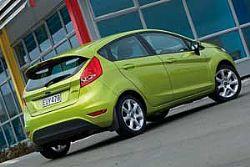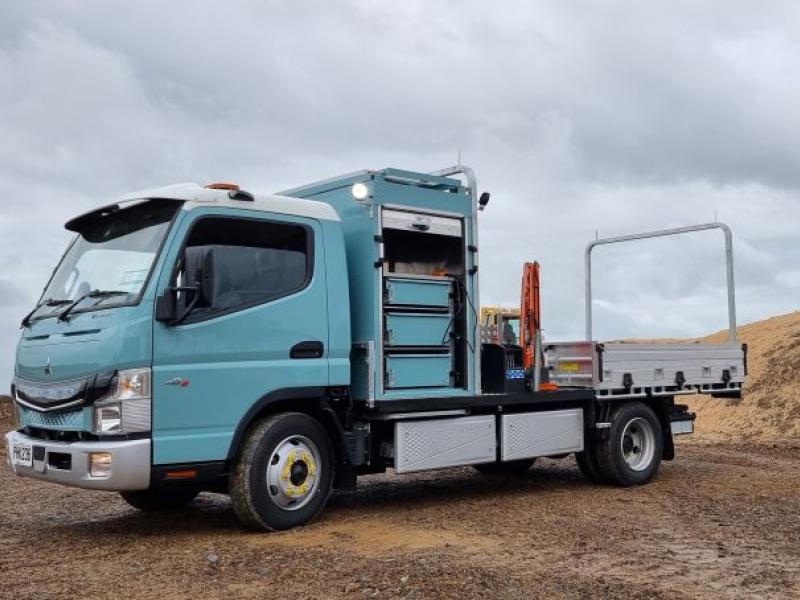|
Right car for the times While New Zealand Ford buyers have only had access to the Fiesta range since 2003, Ford of Europe introduced the nameplate in 1976 after the first oil shock of the 1970s, when the market was demanding a small yet attractive economical car with low fuel costs. Thirty Three years on in the midst of another volatile energy market, consumers are once again demanding such a vehicle, and the all-new Fiesta is the first car produced under the “One Ford” global development strategy put in place by CEO Alan Mullaly. Globally the new Fiesta utilizes the same engines, transmissions and platforms, however local markets can tailor ride and handling characteristics to suit their needs. It is highly unlikely that we will see the introduction of the Fiesta sedan that is produced for Since the launch of the Fiesta hatchback into the A/B market segment in
The manual Fiesta Zetec priced at $24,490 has a 1.6-litre Duratec Twin Independent Variable Cam Timing (Ti-VCT) engine. The new 88kW Duratec Ti-VCT is more fuel efficient than the 1.6-litre engine in the previous Fiesta. It returns a combined fuel economy of 5.9L/100km and emits C02 of 139g/km. Ford says that the Duratec Ti-VCT engine delivers strong torque output across the mid-rev range, peaking at 152Nm at 4,050rpm and uses twin independent variable cam timing to provide a balance of performance and fuel economy. There is also a 1.4-litre Duratec option with a Durashift 4-speed automatic transmission. The 1.4-litre automatic achieves a fuel economy of 6.5L/100km and emits 154g/km of C02. This model’s RRP is $25,990. Both Fiesta Zetec models have features such as 16” alloy wheels, sport rear spoiler and front grille, power adjustable and heated side mirrors with integrated turn signal. Ford says these exterior features are enhanced by colours that have been developed for the new Fiesta. Hot Magenta, Morello, Squeeze (pictured here), Cedar and Vision are added to existing colours to make a total of 11 available choices. The interior of the Fiesta incorporates technology features including Bluetooth hands free with Voice Control, USB and 3.5mm auxiliary audio inputs for MP3 players and iPods, cruise control and steering wheel-mounted audio controls. Sheltering the occupants of the Fiesta is a robust body structure to protect occupants in the event of a collision. The Fiesta’s new shape is approximately 10 per cent stiffer torsionally than its predecessor and more than 55% of the body structure use high-strength steel. The new Fiesta introduces a knee airbag into its Intelligent Protection System (IPS), the first application of a knee airbag in a Ford small car. The 14.8–litre airbag deploys from the lower instrument panel and joins a suite of other safety features that have seen the Fiesta gain a five star NCAP safety rating. These include dual front airbags for driver and passenger, head and thorax side airbags for the driver and front-seat passenger and driver and front passenger beltminder. All Fiestas come standard with Anti-lock Braking System (ABS) with Electronic Brakeforce Distribution (EBD), Dynamic Stability Control (DSC) including Emergency Brake Assist (EBA) and Traction Control (TC). |
Ford says that a key element of the interior design is the instrument panel centre stack. Every button and switch has been crafted with the minute attention to detail that characterizes good portable electronic designs. According to Ford the instrument panel centre stack looks and feels very different to traditional automotive switchgear. Sheltering the occupants of the Fiesta is a robust body structure to protect occupants in the event of a collision. The Fiesta’s new shape is approximately 10 per cent stiffer torsionally than its predecessor and more than 55% of the body structure use high-strength steel. The new Fiesta introduces a knee airbag into its Intelligent Protection System (IPS), the first application of a knee airbag in a Ford small car. The 14.8–litre airbag deploys from the lower instrument panel and joins a suite of other safety features that have seen the Fiesta gain a five star NCAP safety rating. These include dual front airbags for driver and passenger, head and thorax side airbags for the driver and front-seat passenger and driver and front passenger beltminder. All Fiestas come standard with Anti-lock Braking System (ABS) with Electronic Brakeforce Distribution (EBD), Dynamic Stability Control (DSC) including Emergency Brake Assist (EBA) and Traction Control (TC).
Once you are comfortably seated inside, the new Fiesta certainly gives the impression of being a much bigger car than its actual footprint would suggest. The seats are comfortable and there is plenty of room in the cabin as well as plenty of spaces to put mobile phones, bottles of water and other detritus of modern life. We didn’t get an opportunity to sync our mobile phones with the Bluetooth unit nor try the iPod connection, but will examine this more closely in the upcoming road test in June. On the open road the 1.6 litre manual Zetec is definitely the pick of the range with a smooth shifting gearbox and plenty of engine torque for overtaking. Fiesta rides and handles much like its big brother the Ford Focus, it turns into corners beautifully and sits firmly on the road. The 1.4 litre Zetec automatic Fiesta struggled a little with some fairly steep hills on State Highway one and having two hefty blokes onboard didn’t help the power to weight ratio at all. However the automatic changes gears crisply and precisely and once the car is up to cruising speed, it will sit there happily for many kilometres. We envisage this car will be more suited to stop-start city driving where its engine performance will be better suited. For an economic small car, the Fiesta certainly enjoys big car refinement and comfort. Fleets would do well to look at this a replacement for larger 4-cylinder vehicles where possible.
|
Ford's Funky New Fiesta
Vehicle Fitout
Thursday, 02 April 2009
File Download:






